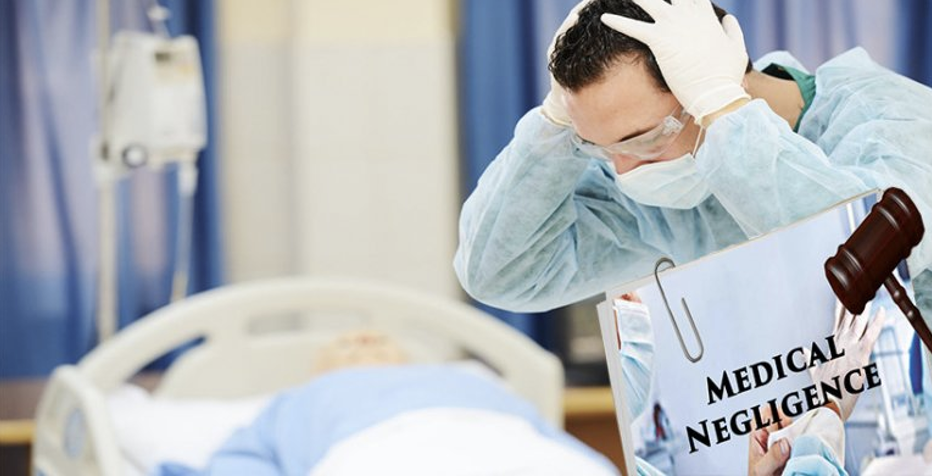Medical negligence happens when a medical practitioner performs the tasks in a way that is not deemed to be an adequate health care level. An accident is considered medical malpractice if an action performed by a healthcare professional is harmful to the patient. It is a major factor in situations of malpractice. A petition for medical malpractice can be filed with the help of a medical malpractice lawyer in Manhattan.
Never associate malpractice with poor or unwanted consequences. Every person reacts differently to medical treatment, and there are no assured results. Malpractice happens only if the acts of the medical provider cause damage to the patient. There are many ways a medical practitioner or hospital does not give a patient the agreed medical quality. Hence, here are some of the most common types of medical negligence or malpractice.
1. Misdiagnosis
Misdiagnosis is one form of medical malpractice. The first step in the management of a medical issue is to diagnose what is wrong. If a doctor doesn’t take the time to diagnose correctly, signs neglect, suspect, or struggle to make an appropriate diagnosis, it can change the patient’s life or end his/her life.
Misdiagnosis is known to be malpractice because it prohibits the patient from being treated properly. In the other scenario, healthy patients are misdiagnosed, and they receive the treatment they don’t require. Not all wrong diagnoses are mistaken. Malpractice is only likely if the doctor has refused to do what most physicians would do with a similar procedure, which impacts the patient’s health.
2. Over-treatment
The over-treatment of a medical condition will damage patients. In contrast, certain medical professionals overdiagnose their patients with the inability to diagnose a medical disorder.
In a patient’s case, it is often dangerous to undergo unnecessary checks and risks and prescribe pharmaceutical products that may not be required. Treatment of an unreal disorder may cause a patient lasting physical injury.
3. Delayed Diagnosis
Delayed diagnosis is similar to misdiagnosis. In this case, the doctor initially makes incorrect diagnostic procedures, but the patient will finally be tested properly and reliably. The delay in diagnosis makes the disorder worse when the patient gets no medication.
To apply for a delayed diagnosis, the doctor should have treated the patient less efficiently than other doctors. For example, a procedure that could lead to a successful diagnosis might not have been planned by the doctor. Or the doctor may fail to see symptoms of a disease in x-rays or CT scans.
4. Surgical and Anaesthesia Errors
Most of the more noticeable malpractice cases arise during surgery. Few surgical errors are referred to as “never occurrences“, so doctors understand that these accidents can never occur. In these cases, a patient does not require specialist evidence, since negligence is apparent. A sponge or other surgical device in the patient’s body is probably the most famous example of a never occurrence. A doctor can even operate on the wrong patient or the wrong part of the body or, during the operation, he may unconsciously damage a particular part of the body.
Anaesthesia is a vital aspect of the treatment, frequently understood but not accepted. An anesthesiologist’s mistakes can have significant impacts, including brain injury and death. An anaesthetic practitioner may fail to check a patient’s record on potential risk factors, fail to give the patient proper instructions before the treatment, incorrect anaesthesia, or fail to track the patient’s vital signs when administering anaesthesia. In some instances, the anaesthesia device is ineffective, meaning that the patient is entitled to file claims against the equipment manufacturer.
5. Birth Injuries
Birth injuries are the most severe forms of medical malpractice. Parents plan to welcome a new child to their families with excitement. They prepare the nursery for the child. They spend time talking about what the baby is to grow up. However, they cannot plan the unintended result of an injury to birth caused by the doctor’s negligence. This birth wound can also lead to the death of a baby or mother in some cases.
Birth injury malpractice can occur in many ways. Prenatal care for the obstetrician might’ve been ineffective, despite the mother searching for medication to protect her health and the health of her unborn child. Negligence can also happen at birth which can lead to maternal or infant birth injury. If those accidents are avoidable, it will potentially result in medical malpractice. Birth complications also contribute to the need for long-term hospital treatment, investing some huge amounts of money.



